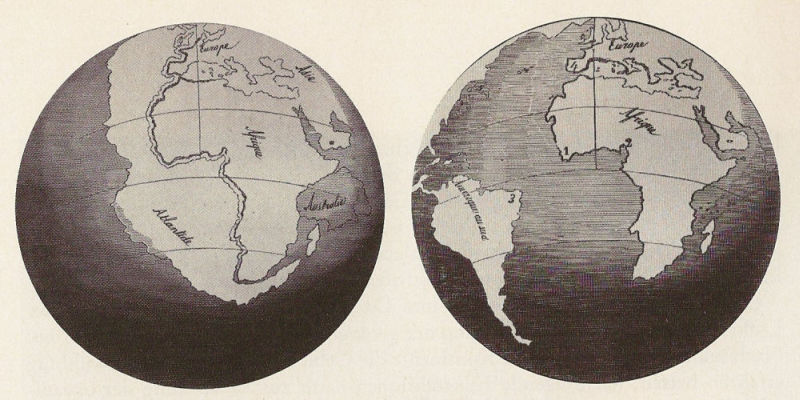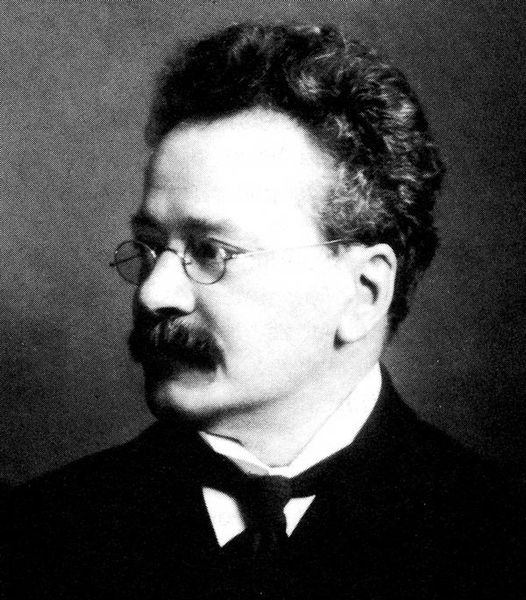<Back to Index>
- Geographer and Scientist Antonio Snider - Pellegrini, 1802
- Engineer and Physicist John Perry, 1850
PAGE SPONSOR

Antonio Snider - Pellegrini (1802 – 1885) was a French geographer and scientist who theorized about the possibility of continental drift, anticipating Wegener's theories concerning Pangaea by several decades.
In 1858, Snider - Pellegrini published his book, La
Création et ses mystères dévoilés ("Creation and its
Mysteries Unveiled"). He proposed that all of the continents were once
connected together during the Pennsylvanian
Period. He based this theory on the fact that he
had found plant fossils in both Europe and the United
States that were identical. He found matching fossils on
all of the continents. He also attributed the cause of the
fragmentation of the supercontinent to the Great Flood of the Bible.

John Perry (1850 – 1920) was a pioneering engineer and mathematician from Ireland. He was born on February 14, 1850 at Garvagh, County Londonderry, the second son of Samuel Perry and a Scottish born wife.
Perry worked as Lord Kelvin's assistant at the University
of Glasgow, and later became professor of mechanical
engineering at Finsbury Technical
College. He was a colleague of William Edward
Ayrton and John Milne at the Imperial College of
Engineering in Tokyo, 1875 – 79, and was also a Fellow of the Royal Society.
In 1900 he was elected president of the Institution of
Electrical Engineers
and from 1906 - 08 served as president of the Physical
Society of London.
In 1895, Perry published a paper challenging Kelvin's assumption of low thermal conductivity inside the Earth, and thus disputing Kelvin's estimate that the Earth was only 20 – 400 million years old, but this had little impact. It was not until the discovery in 1903 that radioactive decay releases heat and the development a few years later of radiometric dating of rocks that it was accepted that the age of the earth was many times older, as Perry had argued. Perry's reasoning held that if the interior of the Earth was fluid, or partly fluid, it would transfer heat much more effectively than the conductivity which Kelvin assumed, and he stated that "much internal fluidity would practically mean infinite conductivity for our purpose."
Kelvin rejected this idea as there was no evidence of tidal deformation of the Earth's crust, and in response Perry made a reference to Kelvin's favorite demonstration of the slow deformation of shoemaker's wax to illustrate the supposed qualities of the presumed luminiferous aether thought then to be necessary to transmit light through space. Perry wrote that "the real basis of your calculation is your assumption that the solid earth cannot alter its shape ... even in 1000 million years, under the action of forces constantly tending to alter its shape, and yet we see the gradual closing up of passages in a mine, and we know that wrinkling and faults and other changes of shape are always going on in the earth under the action of long - continued forces. I know that solid rock is not like cobbler’s wax, but 109 years is a long time, and the forces are great."
The failure of the scientific community to accept a fluid interior to the Earth held back ideas in geology until the concept was revived by proponents of continental drift, and even in the 1960s geophysical models were still being constructed on the basis that the Earth was solid.